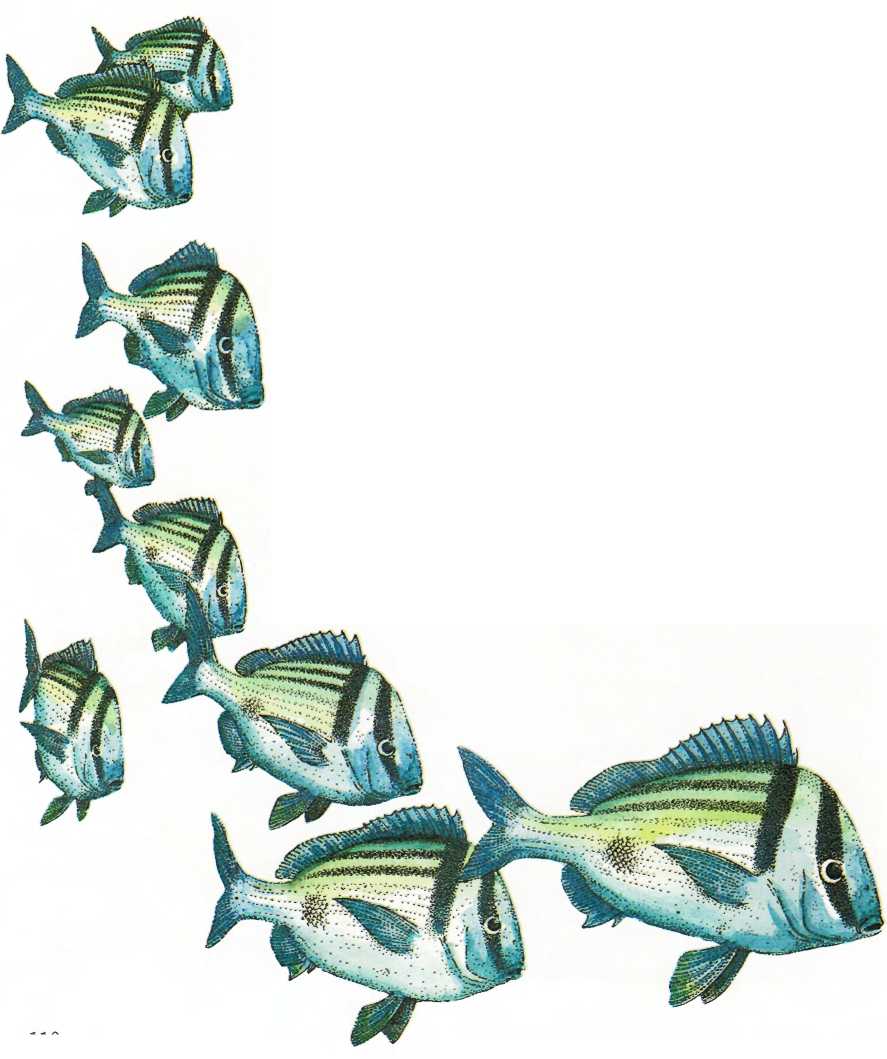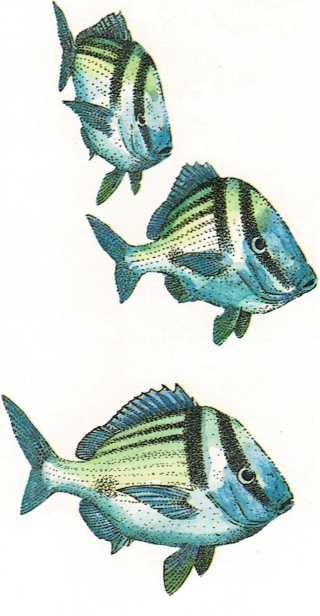Fish schools
Many kinds of fish, when they reach a certain age and size, form into
groups that we call schools. Of course, fish don’t learn anything in
their schools, as you do in yours. They simply move about together.
There may be only a few fish in a school or there may be hundreds or
thousands. A school of herring, for example, may number in the
millions.

A large school of swimming fish is an amazing sight, because all the
fish act as one. They all head in the same direction, swim at the same
speed, and stay about the same distance apart from one another. When
they turn, they all turn at almost the same instant, without any bumping
together or mix-ups. It’s as if they can read each other’s minds.
They can’t do that, of course. However, it has been found that when a
fish in a school sees another fish near it turn, it will turn, too, and
in a split second. Thus, if a fish at the front of a school turns to get
away from danger, all the fish that can see it will turn, and all those
that can see them will turn. So, the whole school seems to turn as one.
Why do fish stay together in these big clusters? It is because it helps
them to survive. For one thing, they’re in less danger. A single fish,
swimming by itself is easy prey for a bigger creature. A codfish could
snap up a great number of small fish every day if it caught them all
alone. But a large group of fish seems to confuse a cod. It has trouble
picking out just one fish to attack. Even though it will finally get one
fish, the rest of the school will get away.
By traveling in schools, it’s easier for some kinds of fish to find
food. Each fish at the edge of a school is a pair of eyes looking for
food. So there are hundreds, thousands, or perhaps millions of
\”watchers” in each school. When one fish sights food, such as a swarm
of little shrimplike copepods, and turns toward them, all the others
will turn, too— even those in the middle of the school who can’t see
the copepods. Thus, the whole school will find a meal.
Staying in schools helps fish reproduce and keep their kind going. At
certain times, schools of fish will travel to special places, such as
the mouth of a river. There, most of the fish will mate and the females
will lay their eggs. A fish living by itself might not find a mate, but
in a school it’s easy.
You go to school to learn things, which is a way of helping you to
survive in the world. It’s the same with fish. They stay in schools to
survive—to find food, to find mates, and for safety.


